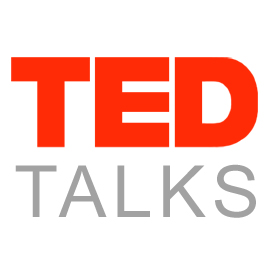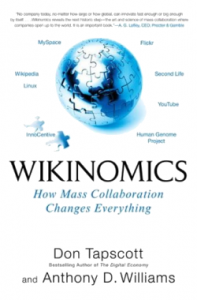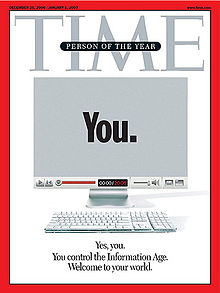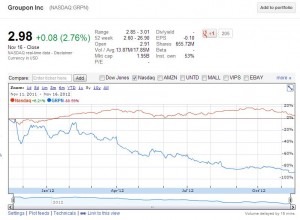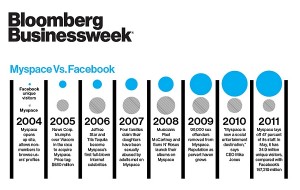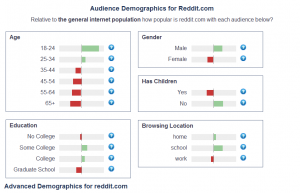I consider myself to be a relatively savvy social media person, however as much as I try, I still don’t understand the social media site reddit.
Reddit is named after its logo a “goofy red-eyed alien” named Snoo and is a social news website, populated by user generated content. This content is then voted “up” or “down” based on popularity and determines its position on the front page.
This sounded easy, so when I first went to the website, I was expecting to find news articles and links similar to Twitter, but organized by popularity rather than chronologically. Instead what I found was a clunky user interface with lots of pictures of grumpy cats and embarrassing photos of awkward girls. (Grumpy cat had been voted up more than 3,000 times at the time of the post.)
Understanding the reddit user:
Reddit users can segmented on demographics, psychographics and technographics.
Demographics: The typical reddit user is predominantly male (72%) between the ages of 25-34 with a college education and has no children.
Psychographics: Customer psychographics can be determined using the VALs (values, attitudes and lifestyles) framework.
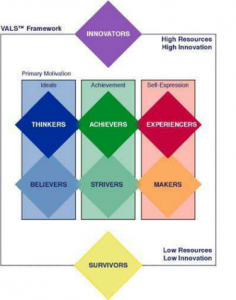
On the horizontal dimension (the primary motivation), the reddit user is likely driven by knowledge and principles. This puts them in the consumer group “thinkers and believers”. On the vertical dimension – the reddit user has a college degree, access to a computer and the internet, and therefore likely has the resources to be innovative. This would categorize the reddit user in the thinkers quadrant.
Technographic: Using Forrestor’s social technographic framework – reddit users would likely exist at all stages on the Forrestor ladder (except for the inactives).
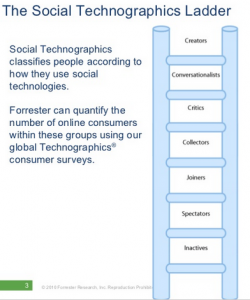
Further analysis on the using the Forrestor social technographic tool allowed me to further identify what proportions relative to the general public fall into each category. The key take away here is that reddit users are above average in every category (except for inactives).
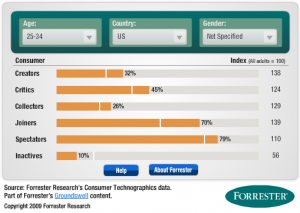
2. Valuing reddit
Reddit is an open source project established in 2005 by Alexis Ohanian and Steve Huffman. They sold the company in 2006 for close to $5 M to Advance Publications (owner of Vanity Fair, Vogue, GQ and the New Yorker).
Anders’ article in Forbes argued that reddit is now worth $240 M. Valuing social media companies has become a controversial topic in the wake of the recent IPO, as the market does not yet have clear ways to value these types of firms.
This post will explore three ways; the discounted cash flow, the market value per user and the use of recapitalization information. These three ways value reddit between $50M and $700M. The good news is that is a lot of money for Advance Publications, but the bad news is this leaves a fair amount of ambiguity.
A) Discounted cash flow: ($50M) – worst case scenario
This method takes into account the present value of all future cash flow (bluntly put revenues – costs). Reddit has very low costs, however its revenue potential is questionable. There are two main sources of revenue; reddit gold and advertising.
Reddit gold: Reddit is a traditional freemium model. A freemium refers to a business model where a service or product is provided for free, however a premium is charged for advanced features. (free + premium = Freemium). Reddit gold encourages users to join for a monthly rate (as low as $2.49/month) and it provides extended features (including added a trophy on your username and blocking ads). Reddit gold was launched in 2010 where the post argues:
“The bottom line is, we need more resources. Whenever this topic comes up on the site, someone always posts a comment about how reddit is owned by Conde Nast, a billion-dollar corporation … But here’s the thing: corporations aren’t run like charities. And reddit’s revenue isn’t great.”
Advertising: Reddit’s revenue potential comes from ads primarily from movie studios and gaming companies.
To date reddit has not be able to make a profit, analysts argue using this model, would likely value the company at $50 M.
In order to make reddit financially viable, the firm should consider actually providing additional services with its reddit gold clients to improve its revenues and communicate the benefits of paid advertising to its site, particularly for firms that are looking to target reddit’s main audience.
B) Market value/user ($700 M) – best case scenario
A more optimistic way of valuing a social media companies (used by venture capitalists) is market value/user. Anders’ argues the market value/user would make reddit worth $700 M. This method is done as follows (Entreprise value = Number of unique users * market value per user).
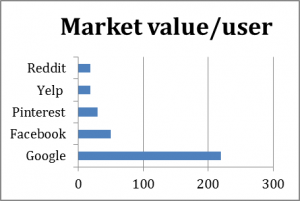
Valuing reddit at Yelp’s value of $17 with 43 million unique users a month would put the overall valuation at $700 M.
Until reddit is able to make a profit and start to demonstrate that it will be able to capture revenues either through its gold program or its advertisers, this valuation is likely much higher than anyone would be comfortable with.
C) Recapitalized ($240 M) – mid range scenario
Anders argues that reddit’s true value is in their recently updated incorporation papers. A clause in the papers stated that if reddit is sold for less than $240 million, they would change their conversion premium.
Based on these three models, I would likely take the conservative estimate which is based on real cash flows and value the firm closer to $50 M. While reddit has a great deal of potential, until the site can attract sustainable revenues through advertising I would hesitate valuing it any higher.
3. Using reddit?
So how should companies and people use reddit?
1. Listening: The most critical function of firms is currently how to monitor social media. Vancouver-based Hootsuite recently announced that reddit was added to their application directory. As argued in the book Groundswell, listening is the first and most important pillar that firms should adopt as part of their social media strategies. For example, reddit users are already testing and blogging about video games, movies and other electronic devices. Firms should find a way to be aware of how their products and/or services are being discussed on reddit.
2. Participating: Ask me anything (AMA) is a crowdsourced interview series launched by reddit, which has been very successful, recently hosting President Obama, Paul Krugman and Margaret Atwood. These interviews are less polished than traditional media, however they have been eliciting millions of page views. Firms should continue to find innovative ways to promote their product/services and gain earned media through these informal channels such as AMA on reddit.
3. Advertising: Reddit has a captive audience of males within the demographic outlined above. For firms, focusing on products and services geared to this demographic, there is an opportunity to target specific ads.
4. Crowdsourcing/fundraising: Reddit users have been able to successfully leverage the site to raise money for community projects, for example, users raised $185,000 for the Haiti earthquake and more than $600,000 for DonorsChoose, an organization allowing users to donate directly to projects at public schools. Non-profit organizations may want to consider targeting reddit users to raise awareness about their campaigns.
Overall, I am starting to understand and love reddit the more I learn about it, however I know I have only explored the tip of the iceberg. Sites like reddit are becoming more and more popular, in order for firms to be successful in the new social media world, they need to stay up on the latest sites, understand their purpose and find ways (where appropriate) to monitor and interact with their audience using these types of forums.

